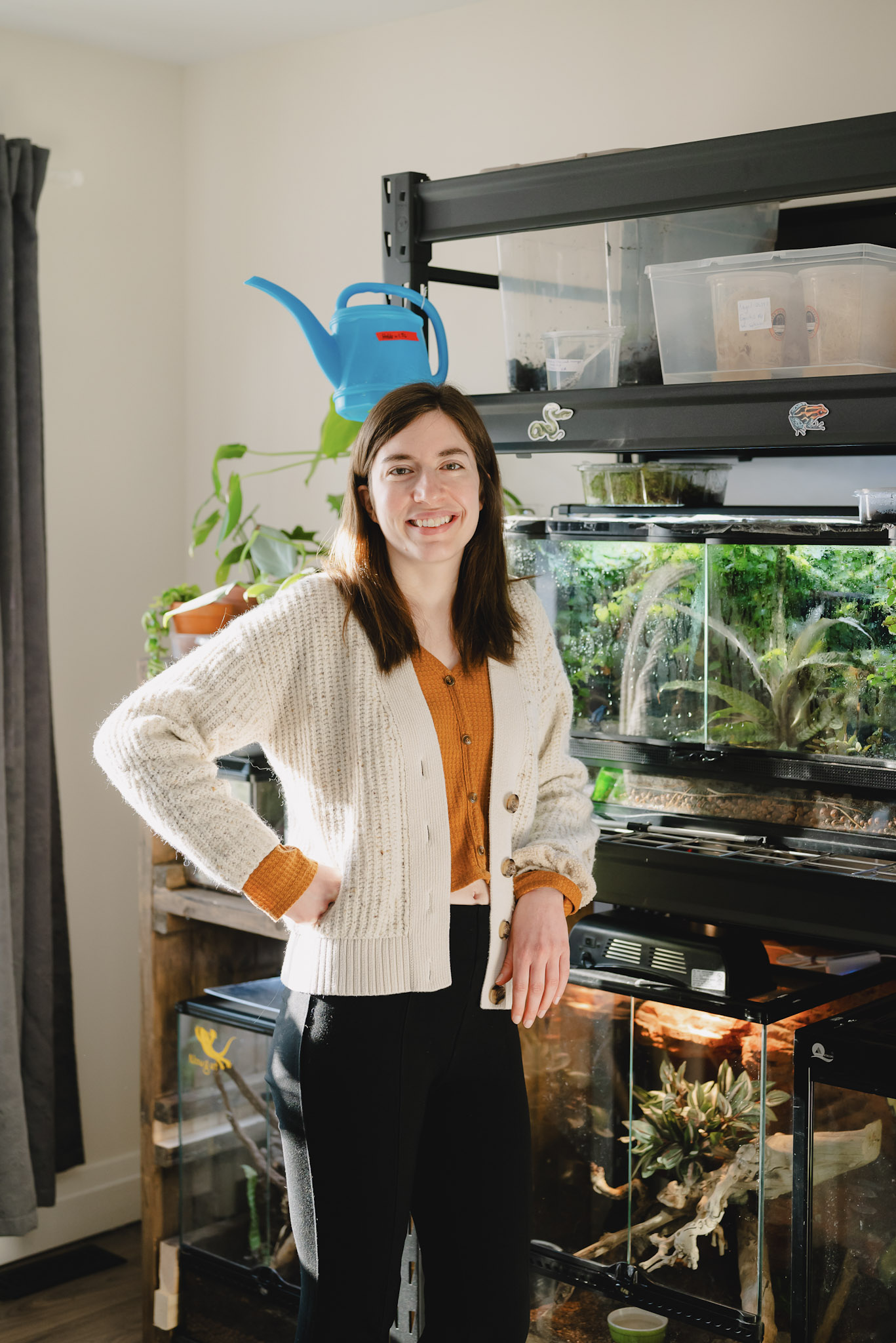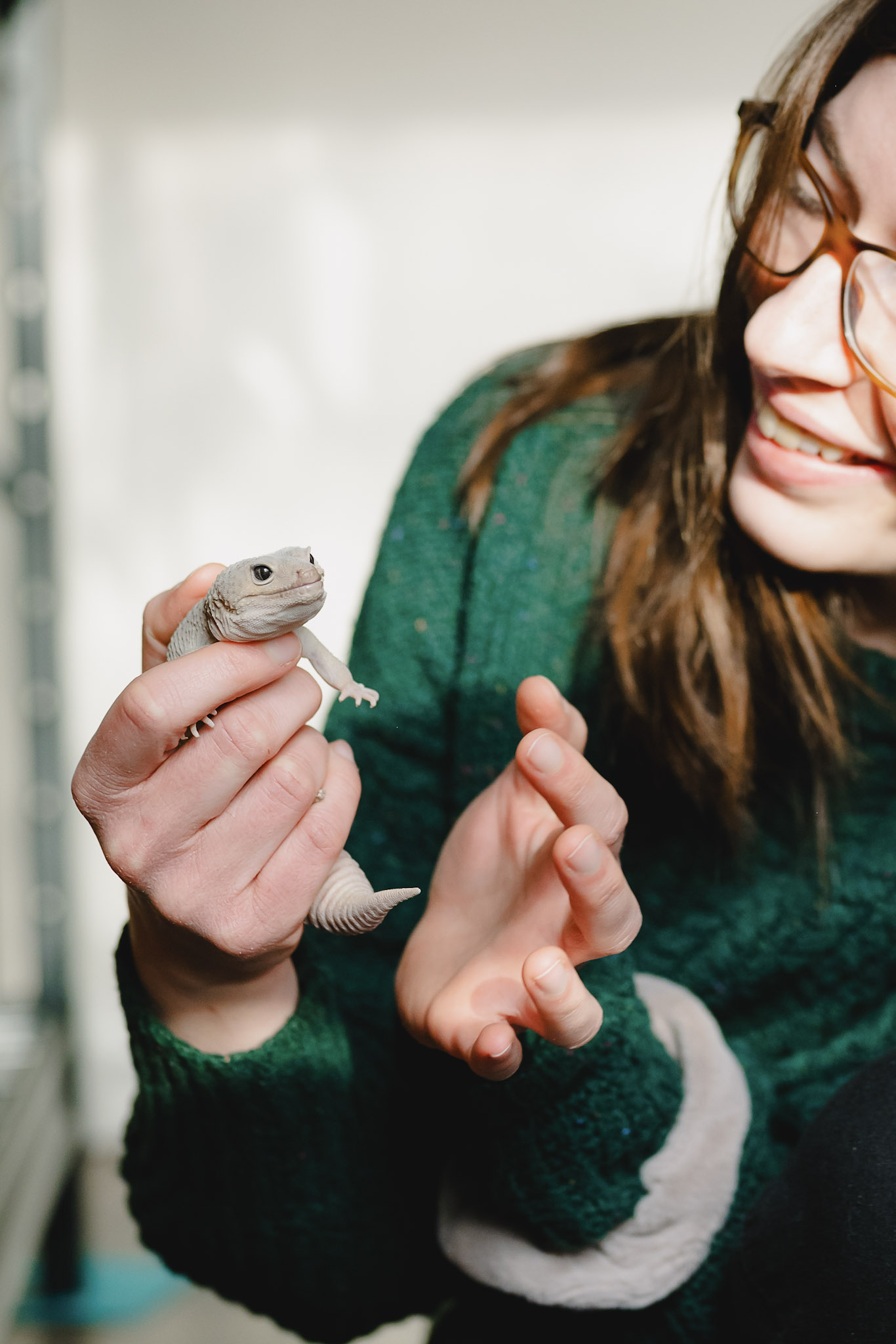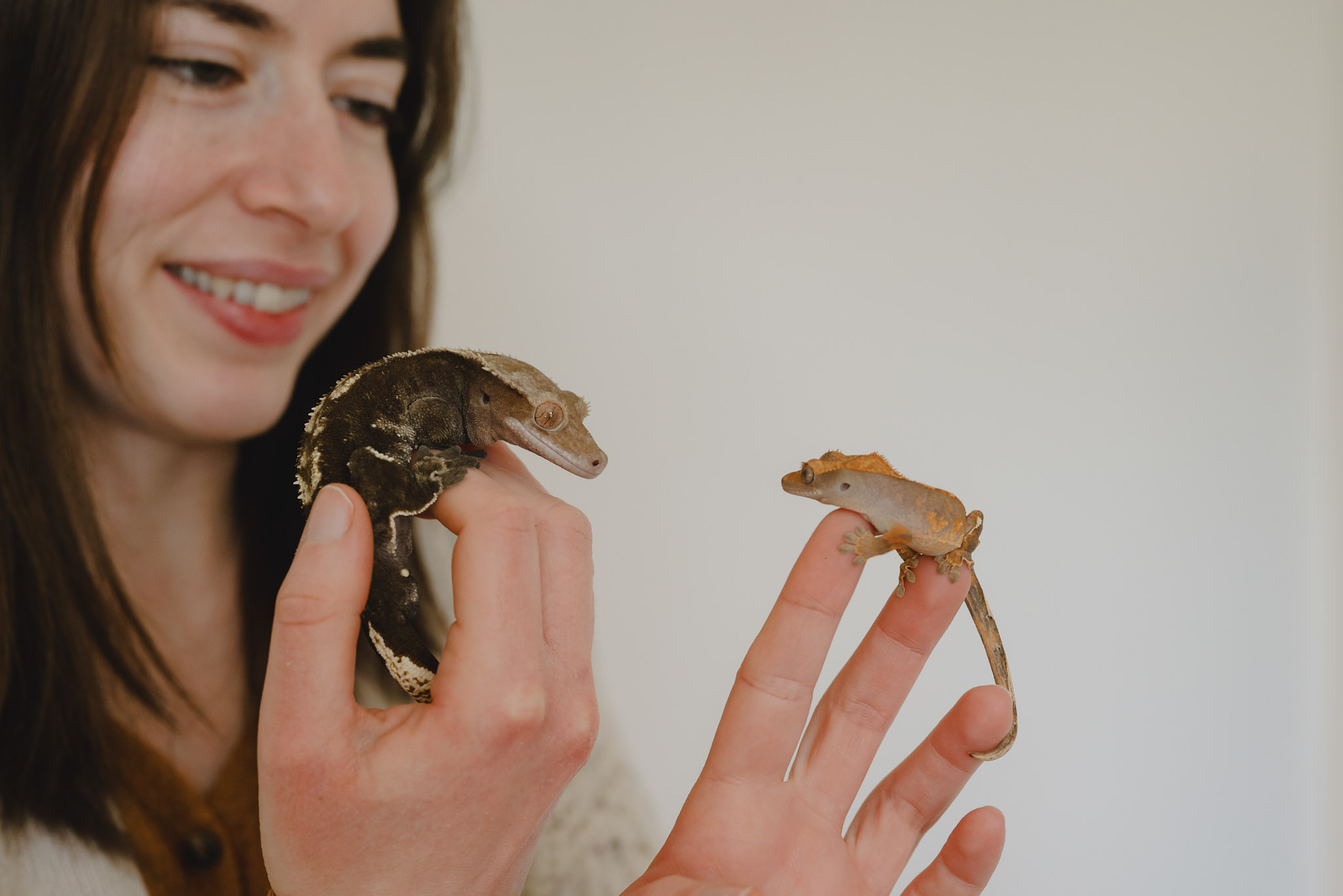Ashley Miles has been an integral part of the Institute of Biomedical Engineering since joining as the project manager in September 2019. In her role, she supports the Institute’s various initiatives and the Director through operational and project administrative support, and effective communication.
Prior to her current position, Ashley had a unique career as a zookeeper at a local reptile zoo, working with a wide range of reptiles and amphibians. She also holds a Master’s degree in electro/neuro physiology, where she studied anoxia tolerance mechanisms in painted turtles. Driven by a passion for continual learning and growth, Ashley finds fulfillment in the dynamic and evolving nature of her role at the Institute.
Can you break down your role into multiple buckets and provide a short description for each of them?
In my role, I handle the daily administrative tasks that keep the Institute running smoothly, such as renewing faculty appointments and organizing the Invited Speaker series. I also coordinate new projects and initiatives with the Director, Associate Directors, and committees, such as creating the online Annual Activity system for faculty members and managing our SharePoint site. Additionally, I ensure effective communication between different people and groups within the Institute.
What are some of the highlights in your current role?
I’ve really enjoyed learning SharePoint and exploring all its capabilities, and it has been a crucial tool in my work since I started. Many processes have been streamlined using this platform, and the workflows I designed continue to evolve, making it an invaluable resource. There are also some exciting developments on the horizon for the Institute, and it’s thrilling to be part of it. The highlights of my role have been the continuous learning opportunities. Coming from a completely different background, it was a significant learning curve at first, but I’ve loved growing and adapting. The pandemic was a particularly challenging period, but it brought unique learning experiences as well. Each new initiative brings fresh opportunities to learn and grow.

Where were you before joining BME?
Before joining BME, I worked as a zookeeper at a local reptile zoo, handling various reptiles, amphibians, and arachnids. Prior to that, I completed a Master’s degree in electro/neurophysiology, using painted turtles to study anoxia tolerance. My fascination with animals led me to zookeeping, although I ultimately found the financial prospects limited. Now, I volunteer at a wildlife rehabilitation center and care for my own animals at home.

Do reptiles make good pets?
Reptiles can make good pets, but they require a significant commitment due to their long lifespans. Unlike typical pets like cats and dogs, reptiles are generally indifferent to interaction.
Before getting a reptile, check local bylaws to ensure that owning certain species is legal. Never take an animal from the wild, as it can carry pathogens and may be endangered. Always choose captive-bred reptiles from reputable breeders, and consider adopting rather than shopping, as many people often rehome reptiles.
Good beginner reptiles include geckos (such as crested and leopard geckos), small lizards (like bearded dragons and blue-tongue skinks), and smaller snakes (such as ball pythons, corn snakes, children’s pythons, milk snakes, and king snakes). Small tortoises like Russian or Hermann tortoises are also suitable but have especially long lifespans. Avoid aquatic turtles, as they grow large and require frequent water changes.
Reptile care involves understanding their ectothermic nature, meaning they have slower metabolisms and don’t eat as frequently as mammals. Most snakes, for example, should be fed an appropriately sized meal every two weeks. Temperature regulation of their enclosures is crucial, and heat sources should be provided when necessary.
Can you showcase some of your reptilian companions?

Crested geckos
Nougat, my male crested gecko, is my first reptile. I’ve had him since he was about a year old, and he’s now around eight. Crested geckos can live for 15-20 years. He lives with his companion, Glue, and they’ve had babies. While we’ve rehomed some, we still have two of their offspring. Crested geckos, also known as eyelash geckos due to their eyelash-like appearance, have sticky feet that allow them to climb surfaces.

Leopard gecko
My leopard gecko, Tumbleweed, is around 12-13 years old. I got him when he was about eight. He’s full of sass and tolerates being handled but doesn’t really like it. Unlike crested geckos, which are tropical reptiles, leopard geckos are from the Middle East and live in dry, desert-like conditions. They don’t have sticky feet and are terrestrial reptiles.

Taiwan beauty snake
Slinky, my rat snake, is around five years old. Most snakes of this type can live 15-25 years. Rat snakes are similar to the more popular corn snake, with an interesting pattern that changes along their body. This pattern change is a defense mechanism, making them appear like more than one snake when curled up. When feeding Slinky, you might see him “rattling” his tail to try to scare us away. Despite this, he’s non-venomous and kills his food by constriction.

Fire-bellied toads
We have three fire-bellied toads, named for their bright orange bellies. When threatened, they arch their backs to reveal this bright colouration to scare away predators. These toads have quite the personalities. During mating season, they make a lot of noise and are always eager for food. If given the chance, they’ll even try to grab your finger, mistaking it for a worm.
What’s the typical life cycle of a lizard?
Contrary to popular belief, not all reptiles lay eggs; many species, such as garter snakes and rattlesnakes, give live birth. For example, a female crested gecko will lay and bury her eggs when ready. These eggs incubate for 2-3 months, though this period can vary based on temperature and other conditions.
Crested gecko eggs can incubate at room temperature, while other species may have different temperature requirements, which can also influence the sex of the hatchlings. When ready to hatch, most reptiles use a small egg tooth to break through the egg’s surface. Once hatched, baby reptiles are fully independent and do not require parental care.
Crested geckos grow to full size in about a year to a year and a half and can live for 15-20 years. If scared, they may drop their tail, a feature unique to crested geckos is that their tails do not regrow once dropped.

Reptiles: what are some of the common misconceptions people have about them?
Reptiles are often feared due to misconceptions that they are all poisonous, venomous, mean, or dangerous. While some species, like large crocodilians, venomous snakes, and large constrictors, can be dangerous, many reptiles are not and, like most wild animals, prefer to be left alone.
The key takeaway is to change the perception that reptiles are inherently bad or scary. While it’s important not to handle wild snakes without knowing the species, it’s surprising how many reptiles are unnecessarily killed due to these misconceptions. Examples include people deliberately running over snakes or turtles crossing roads or hitting them with shovels if found in gardens. Reptiles play a crucial role in the ecosystem, just like any other animal. Even if you encounter a dangerous species, such as a venomous snake, it’s best to leave them alone and admire them from a distance.
There are many adorable and fascinating reptile species worth learning about, and they deserve respect and protection.


